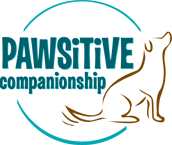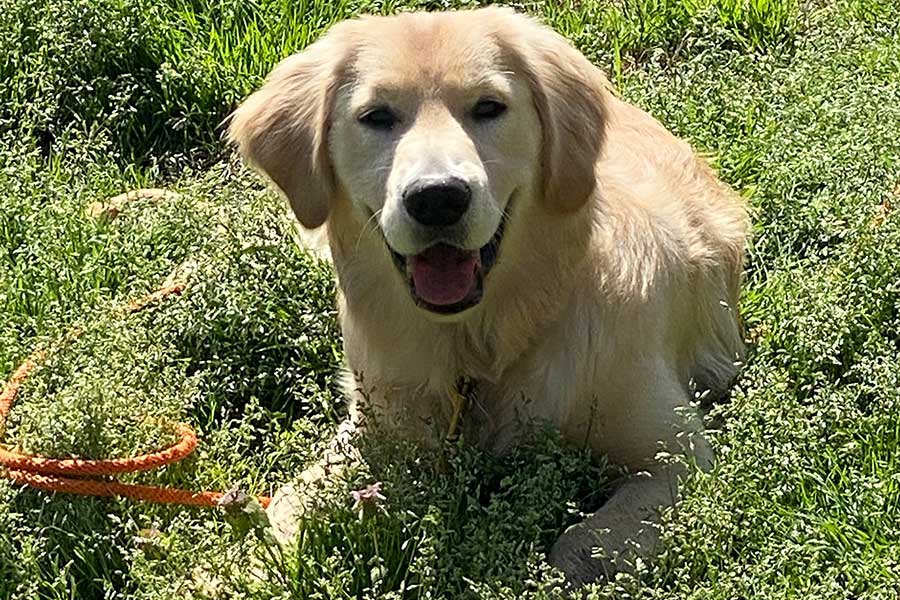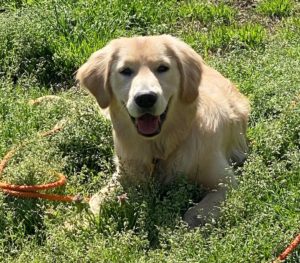What a different time we live in! To flatten the curve and keep our health care systems able to handle the sick we have been told to stay at home unless we work in an essential business. For those of us with puppies or young dogs this is not what we want to hear. How are we supposed to be able to socialize our puppies and continue doing so with our adolescent dogs? And what about our adult dogs who need training? There are alternatives to all of these.
PUPPIES and ADOLESCENT DOGS
Let’s look at socialization first. When you take your puppy for a walk, according to your vet’s recommendation, take high value treats with you. Every time your puppy sees something unusual, ambiguous, novel, or different, feed him or her a high value treat. Continue to do so as long as the object is in view. This means you will not leave the house without treats.
With social distancing we are not able to have people get close to our puppies, pet them, talk to them or interact with them. I think this can be used to our advantage. Europe is ahead of us. When Europeans go out with their dogs, and it should be noted that in Europe dogs are everywhere, they pay attention to, focus on, and interact with their dog. Saying hello to another person’s dog, petting that dog, and ultimately getting in the other dog’s space is not considered antisocial, rather it is the norm. In America it is considered polite and social to say hello to someone else’s dog, pet the dog, and in so doing move into the dog’s space. Imagine what that says to your own dog! Our actions are telling our dogs it is OK to socialize and interact with every dog, and by default, every human they see. (Check out these two articles:
https://www.nytimes.com/2020/03/27/smarter-living/dog-training-behavior.html
https://thebark.com/content/why-are-european-dogs-so-well-behaved)
Not only does this have a real possibility of leading to dogs who become frustrated on leash when they cannot go up to other dogs or people, but it also does not take into account dogs who do not want us to pet them. The former dog can, over time, become frustrated. That frustration morphs into barking, pulling, even lunging to get to the other dog. How embarrassing! And walks are no longer enjoyable. The latter dog, the one who does not want anyone to pet them, might tolerate our rude intrusion or they might react by growling, snarling, even biting.
By treating your puppy every time they see a person or dog and then moving on, you are helping your puppy see people and dogs as a positive, happy experience and you are teaching your puppy they do not have to interact with people or dogs. When you practice this with your puppy you are not interacting with the other dog either. This keeps other dogs, some of whom may be uncomfortable with strangers interacting with them, more relaxed and comfortable. And do remember to say thank you to people who ask to pet your puppy or dog, but politely let them know that when your dog is on leash, you request that people wait for your puppy to sit or you may even say no, especially if your puppy does not want a stranger to pet him or her.
This is equally important for our adolescent dogs too.
So, what can we do to socialize our puppies and continue the process with our adolescent young dogs? Here are websites that offer socialization tips:
https://tiptoptails.com/puppy-socialization-while-social-distancing/
I have also created a Puppy Socialization Bingo card. Email me if you would like a copy. You can also find it on the Pawsitive Companionship Facebook page.
ADULT DOGS
It would appear that those of us who are staying home have plenty of extra time on our hands. This is an opportunity to practice behaviors with our adult dogs and train new behaviors. Walks in the neighborhood, practicing go to mat/sit or lie down/stay, strengthening come when called are all possible ways to utilize the extra time you have. (This can be done with our puppies and adolescent dogs too.)
During this time there are several online videos and YouTube channels that offer training tips and demonstrate how to teach several behaviors. Some of my favorite YouTube channels are:
- Dog Training by Kikopup
- DomesticatedManners
- Laura Monaco Torelli
- Sarah Owings
- Laurie Luck
I will be making short videos of my training exercises with Hygge and will be posting them to my YouTube channel for you to watch and, I hope, find instructional and informative. Simply go YouTube and search for Pawsitive Companionship.
Know that we are all in this together, as they say. Hygge is 8 months old and acting completely like an adolescent dog. Our training time has become even more important if I want him to mature into a well-mannered adult dog.
If we can find a silver lining to this pandemic, let it be that we have more time to help our puppies and adolescent dogs make good choices by training and practicing behaviors that lead to this. It also offers us time to continue to train our adult dogs. Let’s make use of that time in a positive way. Our dogs will benefit from it and our relationship with them will only become stronger.
Happy training!


